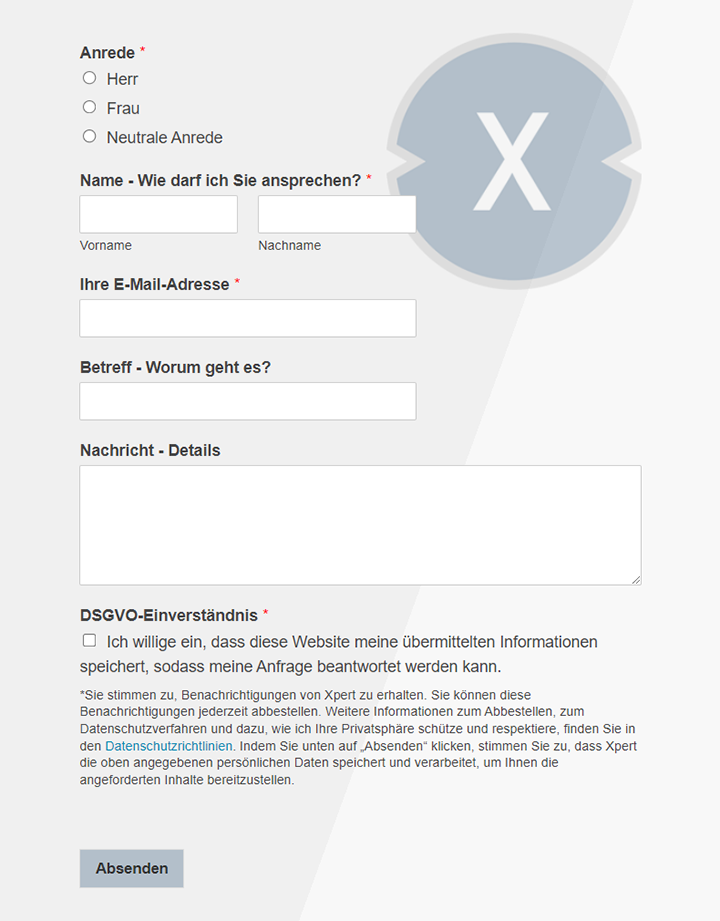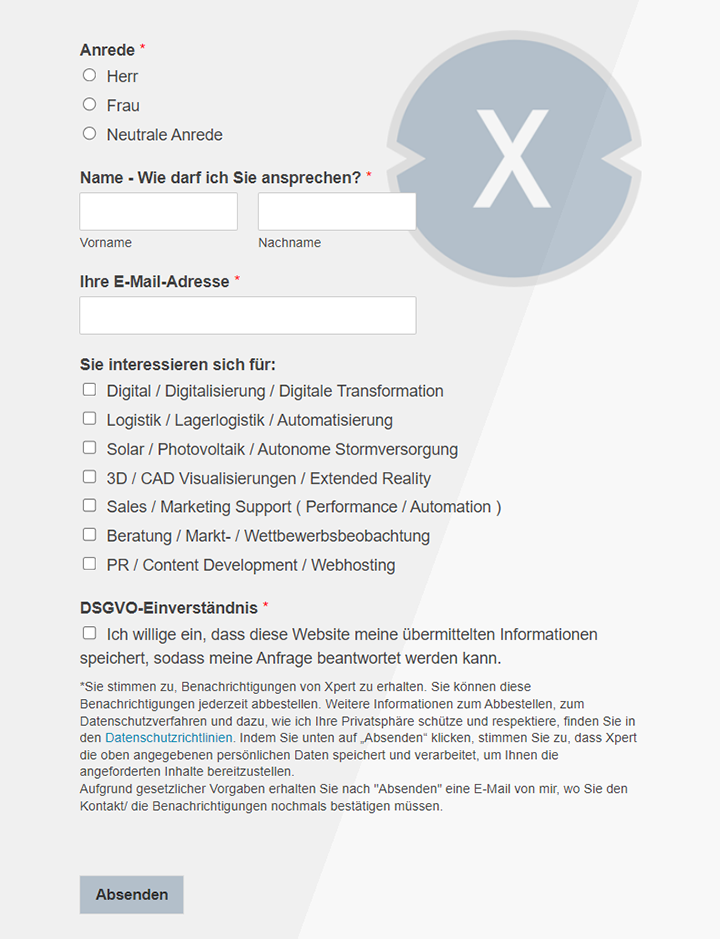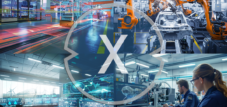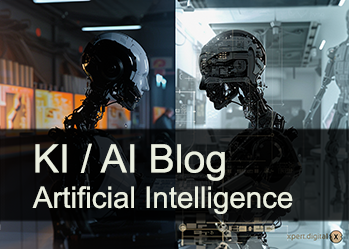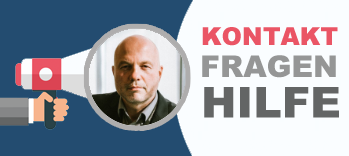Google Ai Edge Gallery: Offline-KI directly on the smartphone
Xpert pre-release
Language selection 📢
Published on: June 1, 2025 / update from: June 1, 2025 - Author: Konrad Wolfenstein
Autonomous AI in everyday life: Google Ai Edge Gallery shows the future
The next era of AI: smartphones as offline experts
The Google Ai Edge Gallery represents a significant step in the development of mobile artificial intelligence by enables powerful generative AI models to be fully offline on Android devices. This experimental application demonstrates how modern smartphones can become independent AI power houses that manage complex tasks such as text transcription, image generation and conversations without an internet connection. The app integrates advanced voice models from Hugging Face and Google's own GEMMA models, which means that users can experience a wide range of AI functionalities locally on their devices. Due to the offline functionality, Google addresses central challenges of cloud-based AI computing, in particular data protection concerns and dependencies on internet connections.
Basics and concept of Google Ai Edge Gallery
Experimental platform for On-Device-KI
The Google Ai Edge Gallery was developed as an experimental alpha version and represents an innovative platform for on-device-artistic intelligence. The application enables users to carry out the latest generative AI models directly on their Android devices without an internet connection if the corresponding model has been loaded. This implementation illustrates Google's strategic focus on Edge Computing and the decentralization of AI processing processes.
As an interactive playground for developers and end users, the app acts equally by providing practical examples for the use of LLM Inference APIs for various tasks. Thanks to the open source nature under the Apache 2.0 license, developers can study the source code and use the application for commercial or other purposes without restrictions. The experimental nature of Gallery shows Google's commitment for innovation in the field of mobile AI technologies and testing new approaches for local AI processing.
Technical architecture and model integration
The technical basis of the Google AI Edge Gallery is based on the integration of litter-optimized models that were specially developed for execution on mobile devices. The application supports various model types, including Google's own GEMMA 3N models and a variety of models from the Hugging Face Litert Community. These models are adapted to mobile hardware through advanced optimization techniques such as quantization for efficient execution.
The app also enables users to import and test their own user-defined `.task` models, which offers significant flexibility for specialized use cases. Real-time performance benchmarks are provided that display important metrics such as time to first token (ttft), decoding speed and latency. These technical capabilities are supported by the Google AI EDGE platform, which offers a complete AI-EDGE stack solution with flexible frameworks, turnkey solutions and hardware accelerators.
Core functionalities for offline AI applications
Word processing and reworking
The prompt LAB of the Google Ai Edge Gallery represents one of the central functionalities for word processing and enables users to carry out a variety of text-based AI tasks. Users can summarize texts, rewrite, generate code or use free-shape input requests to explore different LLM applications in a single round. The application offers several tasks and configurable settings to finely coordinate the output of the model.
Particularly noteworthy is the ability of intelligent text transcription, in which users insert large text blocks and select different writing styles, including formally, serious, entrepreneurial and other tonalities. This functionality significantly expands the practical possible uses, from professional communication to creative text design. The offline nature of these text processing functions ensures the protection of sensitive data, since no information has to be transmitted to external servers.
Image-based AI interaction
The BILD question functionality (ASK Image) enables users to upload images and ask questions, they can receive descriptions, solve problems or identify objects. This multimodal Ki-capability demonstrates the advanced skills of the integrated models in the processing and interpretation of visual content. For example, users can take a photo of a restaurant bill and ask the model how much you have to pay if you have only ordered a drink and a pizza.
The application supports various types of image -based inquiries, from simple object identities to more complex problem -solving tasks. A practical example is the possibility of taking a photo of a mathematical problem and asking for the solution, which underlines the versatility of the integrated computer vision capabilities. The integration of Camerax enables direct image absorption within the app, which increases user-friendliness and reduces the likelihood of GPU-room-related app crashes.
Conversational AI and chat functions
The AI chat area enables users to conduct multi-stage conversations with the integrated AI models. This functionality goes beyond simple question-answer interactions and enables contextual conversations in which the model takes into account previous messages in the conversation. The chat interface has been optimized with various UX improvements, including improved text formatting for smaller screens and the display of accelerator names in chat-messages-subscribers labels.
The conversation skills are supported by the integration of various GEMMA models that are optimized for different applications. The app enables users to switch between different models and to compare their performance in real time, which is of particular interest to developers and AI enthusiasts. The offline nature of chat functionality ensures that private conversations remain completely on the device, which offers significant data protection advantages.
🎯📊 Integration of an independent and cross-data source-wide AI platform 🤖🌐 for all company matters

Integration of an independent and cross-data source-wide AI platform for all company matters-Image: Xpert.digital
Ki-Gamechanger: The most flexible AI platform-tailor-made solutions that reduce costs, improve their decisions and increase efficiency
Independent AI platform: Integrates all relevant company data sources
- This AI platform interacts with all specific data sources
- From SAP, Microsoft, Jira, Confluence, Salesforce, Zoom, Dropbox and many other data management systems
- Fast AI integration: tailor-made AI solutions for companies in hours or days instead of months
- Flexible infrastructure: cloud-based or hosting in your own data center (Germany, Europe, free choice of location)
- Highest data security: Use in law firms is the safe evidence
- Use across a wide variety of company data sources
- Choice of your own or various AI models (DE, EU, USA, CN)
Challenges that our AI platform solves
- A lack of accuracy of conventional AI solutions
- Data protection and secure management of sensitive data
- High costs and complexity of individual AI development
- Lack of qualified AI
- Integration of AI into existing IT systems
More about it here:
Experience powerful AI offline: Future of smartphone intelligence
Practical application cases and use scenarios
Professional and creative applications
The Google Ai Edge Gallery opens up numerous professional applications that range from the creation of dynamic graphics for social media contributions to the development of virtual rooms for video games or VR environments. Creative specialists can use the app to generate artistic illustrations for digital and printed media, whereby local processing enables quick iteration and experimentation. The opportunity to generate code in various programming languages also makes the app attractive for software developers who need fast prototyping solutions.
The application in educational contexts is particularly noteworthy, where users can photograph mathematical problems and get solution steps. This functionality expands the traditional limits of learning and offers new opportunities for self -directed learning and problem solving. The app is particularly valuable to offline availability in environments with limited internet connectivity, such as in rural areas or during travel.
Data protection and security advantages
An important advantage of the Google Ai Edge Gallery lies in the inherent data protection and safety advantages that arise from the local processing. Users can process sensitive data without having to worry about transmission to distant data centers, which is particularly relevant for companies and private individuals with high data protection requirements. This property addresses growing concerns about data sovereignty and the protection of personal information in AI applications.
The app also demonstrates the possibilities for AI applications in environments without Wi-Fi or mobile phone access, which opens up new fields of application in remote areas or in critical infrastructures. Local processing also significantly reduces latency because no network communication is required, which leads to more responsive user experiences. The Google Ai Edge Gallery position these advantages as a pioneer for a new generation of data protection-friendly AI applications.
Technical performance and device requirements
Performance benchmarks and optimization
The Google Ai Edge Gallery integrates comprehensive real-time performance benchmarks, which display important metrics such as time to first token (TTFT), decoding speed and latency for different models. These benchmarks enable users and developers to evaluate the performance of different models on their specific hardware and to make well -founded decisions about the model selection. Google warns that the actual performance of the models can vary depending on the device used, with modern devices with stronger hardware configurations carry out models more quickly.
The size of the models has a significant impact on performance, whereby larger models may need longer to manage tasks in connection with image -based inquiries compared to smaller models. The app implements various optimization strategies, including the use of hardware accelerators such as GPU and NPU, to maximize the processing speed. These technical optimizations are made possible by the underlying Google AI EDGE platform, which provides a complete infrastructure for EDGE KI applications.
Model management and update
The application offers robust model management functions that enable users to discover, download and experiment models from Hugging Face. The download process was optimized with silent foreground notifications in order to reduce the likelihood that download workers will be ended. The app saves the invited model allowlist in a local file so that it can also be read if the allowlist cannot be loaded from the Internet.
Particularly noteworthy is the ability to import and test your own `.task` models, which offers developers considerable flexibility for specialized applications. The app supports various model types and sizes, whereby the standard configurations based on the order of the “accelerator” field are determined in the model allowlist. These functionalities enable both end users and developers to adapt the app to their specific requirements and hardware capabilities.
Decentralized AI solutions: The future of Edge Computing-new ways for data protection-friendly AI
Current availability and platform support
The Google Ai Edge Gallery is currently available as an experimental alpha version for Android devices, with an iOS version awaiting in the near future. The application can be downloaded from the Github repository because it was published as an open source project under Apache 2.0 license. This availability enables developers and AI enthusiasts to study, modify, modify and adapt the app for their own projects.
Google actively invites the developer community to give feedback on the user experience of the Google Ai Edge Gallery, which underlines the collaborative nature of the project. The experimental nature of the app indicates that Google tests various approaches for mobile AI applications and uses the findings for future product decisions. Integration with the wider Google AI EDGE platform suggests that these technologies could possibly be integrated into other Google products and services.
Implications for the AI industry
The introduction of Google Ai Edge Gallery signals an important trend in the AI industry towards decentralized, data protection-friendly AI solutions. This development is in accordance with growing concerns about data protection and the dependence on cloud-based AI services. The app demonstrates that modern smartphones already have computing power to carry out complex AI tasks locally, which opens up new possibilities for innovative mobile applications.
The technological advances that are demonstrated in Google Ai Edge Gallery could have far -reaching effects on various industries, from education to healthcare to corporate communication. The possibility of using AI functionalities completely offline could be particularly important in markets with limited internet infrastructure. Google positions these developments as a leading innovator in the field of EDGE-KI and could encourage other technology companies to develop similar solutions.
Groundbreaking technology: decentralized AI for a new era
The Google Ai Edge Gallery represents a significant milestone in the development of mobile artificial intelligence and impressively demonstrates the potential of on-device-Ki solutions. By enabling complex AI tasks such as text transcription, image analysis and conversation, the app addresses central challenges of the current AI landscape, in particular data protection concerns and infrastructure dependencies. The experimental nature of the application and its open source availability promote innovation and cooperation in the developer community, while at the same time acting as a test platform for future AI product strategies.
The app's technical capabilities, from the integration of various Hugging face models to the extensive performance benchmarks, show the maturity of the underlying edge AI technologies. The versatile applications extend from professional work processes to creative projects to education applications, whereby the offline functionality enables new application scenarios in resource-limited environments. As a pioneer for a new generation of data protection-friendly AI applications, the Google Ai Edge Gallery could be groundbreaking for the future development of mobile AI technologies and pave the way for a more decentralized and more user-oriented AI landscape.
We are there for you - advice - planning - implementation - project management
☑️ SME support in strategy, consulting, planning and implementation
☑️ Creation or realignment of the AI strategy
☑️ Pioneer Business Development
I would be happy to serve as your personal advisor.
You can contact me by filling out the contact form below or simply call me on +49 89 89 674 804 (Munich) .
I'm looking forward to our joint project.
Xpert.Digital - Konrad Wolfenstein
Xpert.Digital is a hub for industry with a focus on digitalization, mechanical engineering, logistics/intralogistics and photovoltaics.
With our 360° business development solution, we support well-known companies from new business to after sales.
Market intelligence, smarketing, marketing automation, content development, PR, mail campaigns, personalized social media and lead nurturing are part of our digital tools.
You can find out more at: www.xpert.digital - www.xpert.solar - www.xpert.plus






